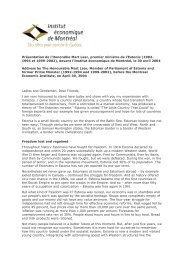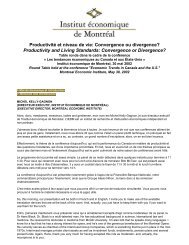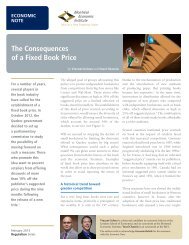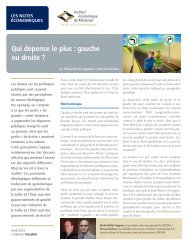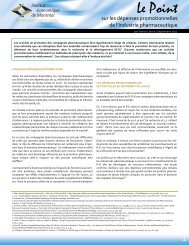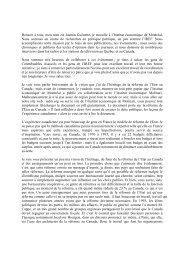Union certification: Developing a level playing field ... - LabourWatch
Union certification: Developing a level playing field ... - LabourWatch
Union certification: Developing a level playing field ... - LabourWatch
Create successful ePaper yourself
Turn your PDF publications into a flip-book with our unique Google optimized e-Paper software.
<strong>Union</strong> <strong>certification</strong>: <strong>Developing</strong> a <strong>level</strong> <strong>playing</strong> <strong>field</strong> for labour relations in QuebecIdeally, we would want to compare growthin GDP and in GDP per capita in a way that takescost of living changes into account. Thiscomparison can be made only for certain baseyears for which adequate, reliable data are athand. These data include calculations of GDP percapita, expressed in purchasing power parity(PPP), conducted by the OECD 3 for various largecities around the world. We can see that GDP percapita, expressed in U.S. dollars, was $29,100 inMontreal in 2004 compared to $34,900 inToronto (+20%), $32,000 in Vancouver (+10%),$45,600 in Chicago (+57%), $52,800 in NewYork (+81%), and $58,000 in Boston (+99%).Thus, although Montreal has a lower cost ofliving, the difference in the real value of goodsand services production (adjusted for cost ofliving) between Montreal and competing cities isconsiderable.Job creationIn terms of job creation, it can be observedthat the total number of jobs rose in Quebec by1.1 million from 1981 to 2007, up by 38.1%.Again, this increase may appear favourable;however, in the course of this same period, 4.5million jobs were created in the rest of Canada, arise of 53.0%, while the United States created 45.6million jobs, a 45.5% increase. In other words, theQuebec economy has systematically beencreating fewer jobs than the rest of Canada for atleast 25 years, despite an improvement since1999.3. OECD, OECD Territorial Reviews: Competitive Cities in the GlobalEconomy, 2006.Figure 5.3Population growth:Quebec, rest of Canada, United States (1981-2007)%10080Quebec Rest of Canada United States6040200-20Under age 15 Age 15 to 64 Age 65 and overSource: Statistics Canada, CANSIM Table 051-0001; United Nations Population Division, http://esa.un.org/unpp.Note: For the United States, the period is from 1980 to 2005.Montreal Economic Institute29



